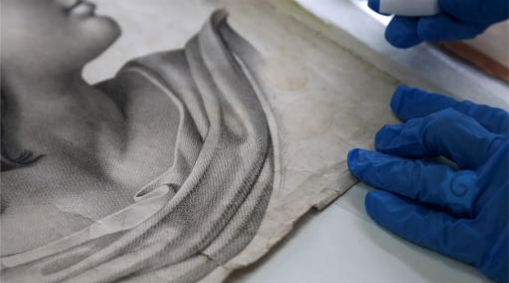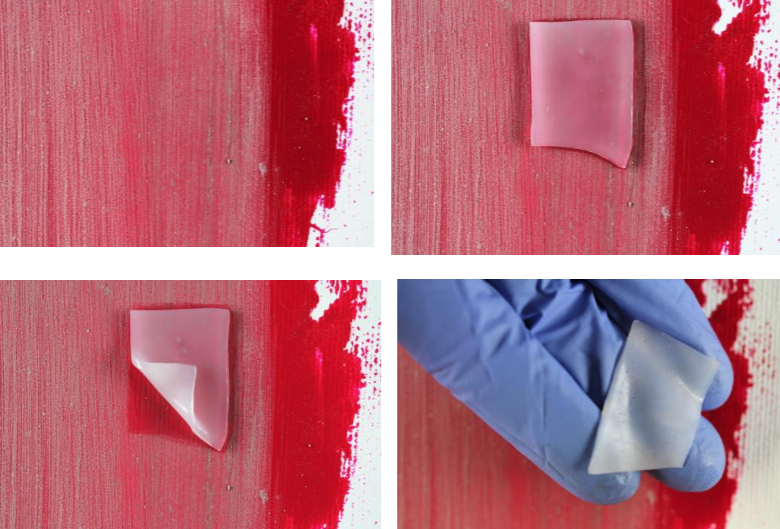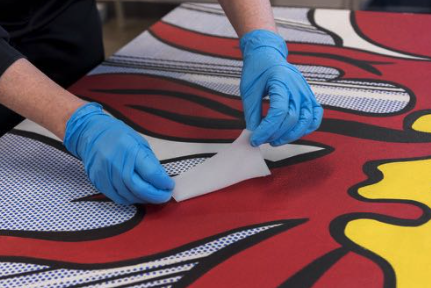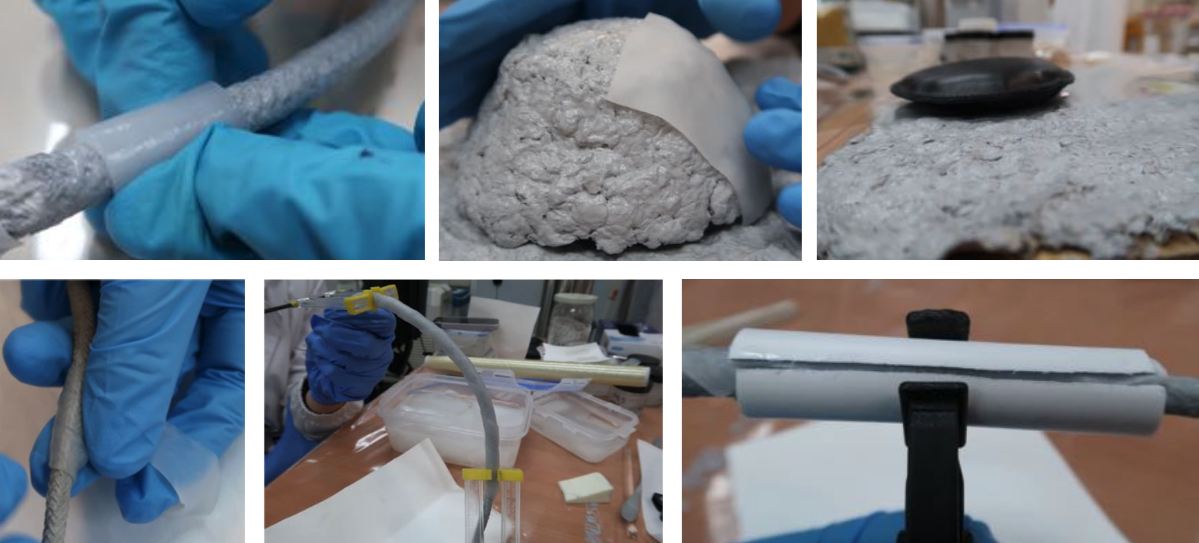WP2 - Innovative gels for surface cleaning
Conservative challenge
Many contemporary art surfaces, particularly those made of modern paints, such as acrylic paints, are exceptionally difficult to clean. In fact they possess a high tendency to incorporate dust and grime, while being very sensitive to the action of both organic solvents and water, i.e., the most used liquids for the cleaning of works of art. On the other hand, a recent survey of the condition of plastic art objects concluded that 75% of them require cleaning. Also, the removal of pressure sensitive tapes and adhesive residues is equally difficult. To address these issues, it is important to find a solution that ensures safe and controlled removal with no modification of the artefact and, no residues. Finally, the removal of unwanted contemporary materials from artistic surfaces is also necessary when outdoor murals (street art), sculptures, and monuments are vandalized with graffiti. The selective removal of the unwanted overpaintings is particularly demanding whenever acrylic, vinyl, and alkyd colours were used.
Thus, one of the main aims of this WP was the development of innovative gels for the confinement of cleaning fluids, specifically designed to address these challenges. In order to provide conservators with a wide palette of available solutions, we developed elastic and flexible hydrogels, and tunable organogels which can be safely used on artistic surfaces to be cleaned, even if rough, irregular, or sensitive to water and organic solvents.

Formulations
- 20 hydrogels: Responsive hydrogels for the safe and controlled cleaning of water- and solvent-sensitive surfaces. About 20 hydrogels formulations (with tunable mechanical properties and retentiveness) were developed for the removal of unwanted materials from artistic surfaces (acrylic paint, oil paint, watercolor, metal, plastic, canvas, paper, stone, wood, etc.). Some of these hydrogels are already available on the market to end-users (www.csgi.unifi.it/products/products.html).
- 12 organogels: Responsive organogels for the safe and controlled cleaning of surfaces that can not tolerate even minimal contact with water. About 12 organogels formulations were developed, loadable with different solvents (apolar ---- polar). Some of these organogels will be soon available on the market to end-users.

Innovation
Innovative hydrogels and organogels developed in NANORESTART leave no residues on the surface of the painting and release the cleaning fluids in a controlled way. In particular, the developed hydrogels are highly flexibile and elastic, allowing for the application on rough and/or irregular surfaces. Organogels are designed to be used on highly water-sensitive works of art. Depending on the formulation, they can be used once loaded with different solvents or without any solvent, to remove dust from artistic surfaces, thanks to their stickiness.
How do they work?
Gels developed in NANORESTART are used as vehicle (containers) for cleaning fluids. They can be loaded with different solvents and cleaning fluids, as the 12 nanostructured fluids featuring cleavable surfactant developed in NANORESTART. Innovative gels prevent the cleaning agent from fast evaporation and uncontrolled penetration into porous materials making the cleaning safer. Moreover, thanks to their formulation they do not leave residues on the treated surface. Sticky organogels do not contain any solvent, and can be used to remove dust from highly solvent-sensitive artistic surfaces.

How are they applied?
Innovative gels can be easily cut down and shaped in the desired size and form prior to application. The application is carried out by laying the gel over the surface to be cleaned. Depending on the type of material to be removed and on the type of cleaning fluid used, the unwanted material can be either solubilized or swollen. In the latter case, a gentle mechanical action should be carried out to remove the swollen and soften unwanted materials. Hydrogels or sticky organogels can be also used as ultra-delicate eraser for the removal of surface dirt.

Case studies and application
These innovative systems have been successfully used to remove soil and other unwanted layers from masterpieces by Jackson Pollock, Roy Lichtenstein, Eva Hesse, Giorgio De Chirico, Albert Gleizes, Jean Dubuffet, and others.






